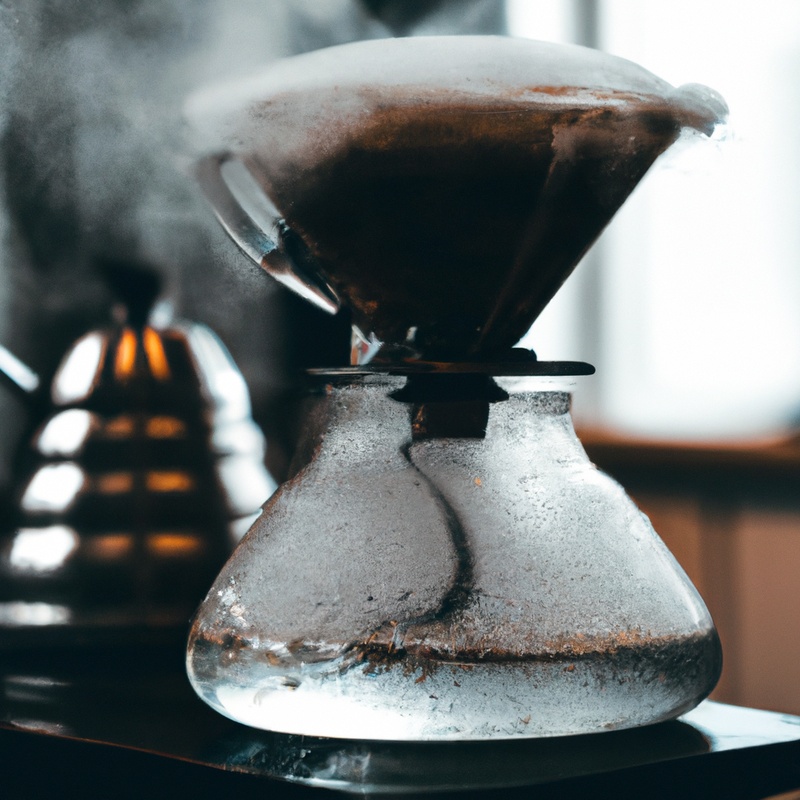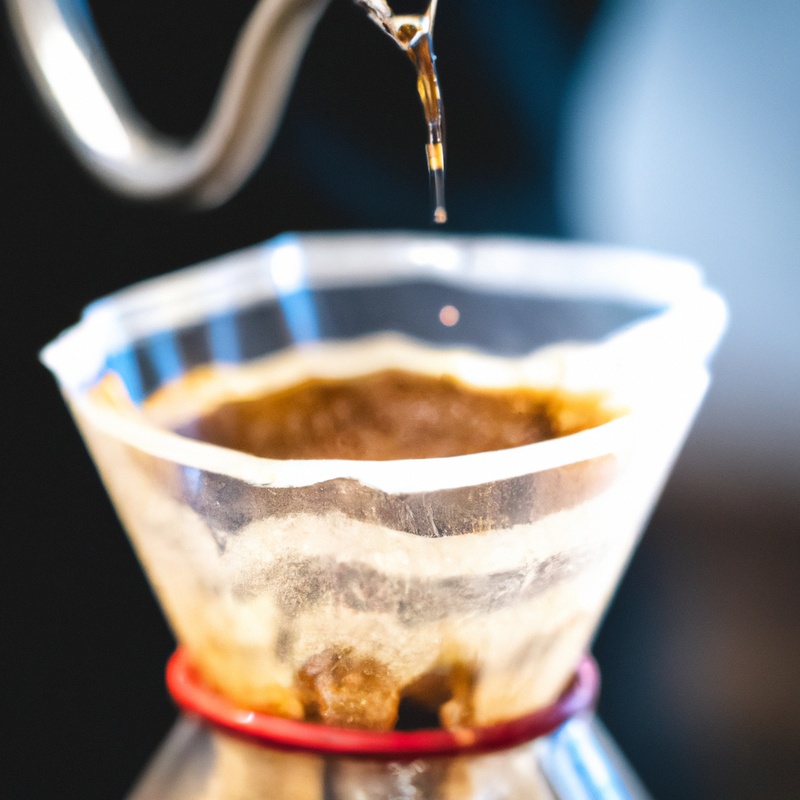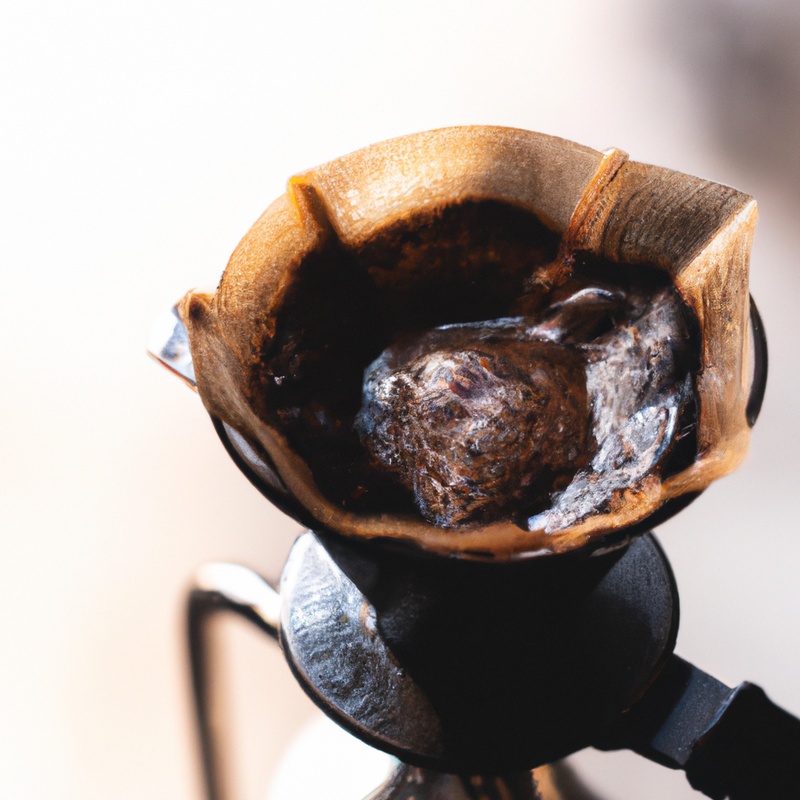Key Takeaways:
- Espresso brewing method contains the most caffeine.
- French press brewing method has a high caffeine content.
- Drip brewing method typically has a moderate amount of caffeine.
- Instant coffee brewing method has the lowest caffeine content.
Are you a coffee lover who can’t start their day without that invigorating kick of caffeine? Well, if you’ve ever wondered which coffee brewing method packs the most punch when it comes to caffeine content, you’re in the right place.
In this article, we’ll dive into the world of caffeine and explore the various factors that affect its levels in coffee.
From drip coffee brewing to French press, pour over, espresso, and cold brew, we’ll compare the caffeine content of each method. So, grab your favorite coffee mug and get ready to uncover the secrets behind your morning jolt.
| Brewing Method | Caffeine Content (mg per 8 oz serving) |
|---|---|
| Drip Coffee | 95 |
| Espresso | 63 |
| French Press | 80 |
| AeroPress | 60 |
| Instant Coffee | 63 |
Understanding Caffeine Content
Understanding caffeine content in coffee is essential for coffee lovers.
Knowing what is caffeine, factors affecting its content, and its importance helps you make informed choices about your coffee consumption.
What is caffeine?
Caffeine is a natural stimulant found in various plants, including coffee beans, tea leaves, and cacao pods.
Its main effect is to increase alertness and reduce fatigue.
When you consume caffeine, it gets absorbed into your bloodstream and reaches your brain, where it blocks adenosine receptors, which in turn prevents drowsiness.
This results in increased energy levels and improved focus.
However, it’s important to consume caffeine in moderation and be aware of its potential side effects, such as increased heart rate and disrupted sleep patterns.

Factors affecting caffeine content in coffee
The caffeine content in coffee can vary depending on several factors.
One major factor is the type of coffee bean used – arabica beans generally have less caffeine than robusta beans.
The roast level also affects caffeine content, with darker roasts having slightly less caffeine than lighter roasts.
Another factor is the brewing method – espresso tends to have higher caffeine content than drip coffee.
Additionally, the amount of coffee grounds used and the brew time can impact caffeine levels.
Remember, these factors can influence the caffeine content in your cup of joe.

The importance of caffeine levels in coffee
The caffeine levels in coffee are important because they directly impact the stimulant effects of the beverage.
Higher caffeine content can provide a more energizing effect, making it useful for boosting focus and alertness.
On the other hand, lower caffeine levels may be preferred for those sensitive to its effects or who want to enjoy coffee without disrupting sleep patterns.
Understanding the caffeine levels in coffee can help you choose a brew that aligns with your preferences and needs.
Comparing Coffee Brewing Methods
Let’s compare different coffee brewing methods to determine which one delivers the most caffeine.
Drip Coffee Brewing
Drip coffee brewing is a popular and classic method for making coffee. It involves pouring hot water over ground coffee beans in a filter, allowing it to slowly pass through and extract the flavors.
This method typically produces a medium-bodied and smooth cup of coffee.
To enhance the taste, you can experiment with different grind sizes and water temperatures. However, depending on the strength you desire, drip coffee may contain less caffeine compared to other brewing methods such as espresso or French press.

French Press Brewing
French Press brewing is a popular method for making coffee at home.
It involves steeping coarsely ground coffee beans in hot water for a few minutes and then pressing the plunger to separate the coffee grounds from the liquid.
This method produces a full-bodied and flavorful cup of coffee.
One advantage of French Press brewing is that it allows for more control over the brewing time and water temperature, resulting in a stronger, more caffeinated cup of coffee.
However, it’s important to note that the amount of caffeine in your coffee also depends on the type and quantity of beans you use.
Pour Over Brewing
Pour over brewing is a simple and effective method of making coffee. To brew using this method, you’ll need a pour over cone, a filter, ground coffee, and hot water.
Start by placing the cone on top of your coffee mug or container.
Then, insert a paper filter and rinse it with hot water to remove any paper taste. Add the desired amount of ground coffee to the filter, ensuring an even distribution.
Slowly pour hot water over the coffee, moving in a circular motion from the center outward.
Allow the coffee to steep and drip through the filter. Enjoy your delicious, freshly brewed pour over coffee!
Espresso Brewing
Espresso brewing is a popular coffee brewing method that yields a strong and concentrated flavor. The process involves forcing hot water through finely ground coffee beans under high pressure.
This quick extraction time of about 25-30 seconds produces a small shot of espresso, which contains a higher caffeine concentration compared to other brewing methods.
However, the actual caffeine content in espresso can vary depending on factors like bean type and brewing technique. It’s important to note that while espresso may have a higher concentration of caffeine per ounce, a standard cup of coffee typically contains more caffeine overall.
Cold Brew Brewing
Cold brew brewing is a method that involves steeping coffee grounds in cold water for an extended period of time, usually between 12 to 24 hours. This slow extraction process produces a smooth and less acidic cup of coffee.
To make cold brew, simply combine coffee grounds and cold water in a jar or a pitcher and let it sit in the refrigerator.
After the desired steeping time, strain the mixture to separate the coffee concentrate from the grounds. The resulting liquid can be diluted with water or milk to taste and enjoyed over ice.
Determining the Caffeine Content
To determine the caffeine content in coffee, factors such as measurement methods, brewing techniques, grind size, and water temperature are important considerations.
Measuring caffeine levels in brewed coffee
To measure the caffeine levels in brewed coffee, you can use a few different methods. One common way is to use a spectrophotometer, which measures the amount of light absorbed by the coffee sample.
Another method is high-performance liquid chromatography (HPLC), which separates and quantifies the caffeine molecules.
Both methods provide accurate results. Keep in mind that the caffeine content can vary depending on factors like the type of coffee bean, roast level, and brewing time.
Comparison of caffeine content per brewing method
When it comes to comparing the caffeine content per brewing method, the results can vary. Here’s a breakdown of some common brewing methods:
- Espresso: Espresso typically contains the highest caffeine content per serving due to its concentrated nature.
- Drip/filter coffee: Drip or filter coffee usually has a moderate amount of caffeine, as the brewing process involves water passing through the coffee grounds.
- French press: French press coffee tends to have a slightly higher caffeine content compared to drip coffee, as the longer steeping time allows for more extraction.
- Cold brew: Cold brew coffee is known for its smooth taste, but it generally has a higher caffeine content due to the extended steeping time.
Keep in mind that factors like coffee bean type, roast level, and brewing time can influence caffeine levels. Ultimately, personal preference and tolerance should guide your choice of brewing method.
The impact of grind size and water temperature on caffeine extraction
The grind size and water temperature can greatly affect the extraction of caffeine in your coffee.
Grind size plays a role in the surface area available for extraction.
Finer grinds will have more surface area, allowing for quicker and more efficient extraction of caffeine.
On the other hand, coarser grinds will have less surface area, resulting in a slower and less complete extraction.
Water temperature also plays a crucial role.
Higher temperatures, such as between 195-205°F (90-96°C), can extract caffeine more effectively.
This is because hot water molecules move faster and are more efficient at breaking down the coffee particles to release caffeine.
In contrast, lower water temperatures, like below 175°F (80°C), may not extract caffeine as efficiently.
To maximize caffeine extraction, consider using a finer grind size with water at a higher temperature.
However, keep in mind that taste preference varies, so feel free to experiment and find the optimal balance for your personal enjoyment.
Factors That Influence Caffeine Extraction
The caffeine extraction in coffee is influenced by factors such as the type and roast level of the beans, the extraction time and process, and the brew strength and water-to-coffee ratio.
Coffee bean type and roast level
Coffee bean type and roast level greatly affect the caffeine content in your cup of joe.
Darker roasts may seem bolder and more intense, but they actually contain less caffeine than lighter roasts.
Additionally, the type of coffee bean used can also impact caffeine levels.
Robusta beans tend to have higher caffeine content compared to Arabica beans.
So, if you’re looking for a stronger caffeine kick, go for a light roast made with robusta beans.
Extraction time and process
Extraction time and process play a significant role in determining the caffeine content of your coffee. The longer the brewing time, the more caffeine is extracted.
Likewise, the brewing method also affects the extraction process.
For example, espresso has a shorter extraction time, resulting in a higher concentration of caffeine per volume. Conversely, methods like French press or cold brew have longer extraction times, which can lead to a higher overall caffeine content.
It’s important to note that the amount of caffeine extracted may also depend on variables like coffee grind size and water temperature.
Brew strength and water-to-coffee ratio
Brew strength and water-to-coffee ratio play a key role in determining the caffeine content of your coffee. The stronger the brew, the more caffeine is extracted.
Adjusting the water-to-coffee ratio allows you to control the strength.
If you prefer a stronger cup, use a higher coffee-to-water ratio. Experiment with different ratios until you find what works best for you.
Remember, the ratio affects both flavor and caffeine content, so find the balance that suits your taste.
The Takeaway
Choosing the right brewing method for your caffeine needs and considering factors beyond caffeine content will help you make the best coffee choice for yourself.
Choosing the right brewing method for your caffeine needs
When it comes to choosing the right brewing method for your caffeine needs, there are a few factors to consider.
The type of coffee beans and the size of the grind can influence caffeine extraction.
Generally, brewing methods that use higher water temperatures and longer contact times, such as espresso or French press, tend to have higher caffeine content.
However, it’s important to note that individual preferences, taste, and brewing techniques can also impact the final caffeine concentration.
Ultimately, it’s all about finding the method that suits your personal taste and caffeine requirements.
Factors to consider beyond caffeine content
When choosing a coffee brewing method, there are factors to consider beyond just caffeine content.
These factors include flavor, aroma, body, acidity, and overall brewing process.
Each brewing method brings out different characteristics in the coffee, so it’s important to think about what kind of taste you prefer.
Additionally, some methods require more skill and equipment than others.
Ultimately, the best brewing method for you will depend on your personal preferences and the overall coffee experience you’re looking for.
Frequently Asked Questions
Does longer brewing time result in higher caffeine content?
Longer brewing time does result in higher caffeine content.
When coffee grounds are in contact with hot water for a longer period, more caffeine is extracted.
This means that methods like French press and cold brew, which have longer brewing times, tend to have higher caffeine levels compared to quicker methods like espresso.
However, it’s important to note that factors like coffee bean type, roast level, and water temperature also affect caffeine content.
Enjoy your cup of coffee, whichever method you prefer!
Can decaf coffee still have caffeine?
Decaf coffee can still have caffeine, but in much smaller amounts than regular coffee.
The decaffeination process removes most of the caffeine, typically leaving behind only a small percentage.
On average, a cup of decaf coffee contains about 2-5 milligrams of caffeine, while a regular cup can have anywhere from 95-200 milligrams.
If you’re looking to avoid caffeine completely, it’s important to be aware that decaf coffee is not completely caffeine-free.
However, it is a good option for those who are sensitive to caffeine or trying to reduce their intake.
How does caffeine content vary in instant coffee?
The caffeine content in instant coffee can vary depending on a few factors. Firstly, the brand of instant coffee can affect the caffeine levels.
Different brands may use different coffee beans or processing methods, resulting in varying caffeine content.
Secondly, the strength of the instant coffee can impact caffeine levels. If you use more coffee granules per cup, it will likely contain more caffeine.
Lastly, the serving size also plays a role.
Larger servings will have more caffeine compared to smaller ones. So, when it comes to instant coffee, keep in mind that caffeine content can vary based on the brand, strength, and serving size.
Does consuming coffee with food affect caffeine absorption?
Consuming coffee with food can affect caffeine absorption. When you have food in your stomach, it slows down the rate at which caffeine is absorbed into your bloodstream.
This means that the caffeine from your coffee may take longer to kick in and its effects may be milder.
However, the exact impact can vary depending on factors such as the type and amount of food consumed. If you want to experience the full effects of caffeine, it’s best to have your coffee on an empty stomach.
Is darker roast coffee stronger in caffeine?
Darker roast coffee may seem stronger in flavor, but when it comes to caffeine content, it is actually the opposite. Contrary to popular belief, lighter roast coffee beans tend to have a slightly higher caffeine content than darker roast ones.
When coffee beans are roasted for longer periods, the caffeine content can be slightly reduced.
So, if you’re looking for a stronger caffeine kick, go for a lighter roast.
Final Verdict
The caffeine content in coffee can vary depending on various factors, including the brewing method. While espresso is often known for its high caffeine concentration, other brewing methods like drip coffee and cold brew can also yield substantial amounts of caffeine.
Measuring caffeine levels in coffee can be challenging, but factors such as grind size, water temperature, and brewing time play a role in extraction.
It’s important to consider your caffeine needs and preferences when choosing a brewing method, as other factors like taste, aroma, and convenience also come into play. Ultimately, finding the right balance between caffeine content and overall enjoyment is key.
